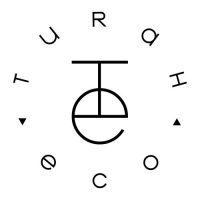Realise the political power of your money and spend it with the brands you know are treating their workers and the environment in the best possible way” -Lily Cole
We always talk about fast fashion and the impact it has on the social life and environment. In this post I would like to point the few ways that make brands unethical and one should do their research on these companies before spending more money and making them monopolies and invincible to accountability.
- Transparency
I always say that if people care about what they eat, in terms of ingredients and the technique of cooking, why can’t they have the same energy for what they put on their bodies. It is our responsibility to support brands that are ethical enough to show us who makes the clothes, where they are made, what they are made of and why they were made. Making brands accountable puts them in a position to make amendments in areas that would have been normally ignored. For unethical brands, they will never show the factories where their garments are made, some of them can not show you how their leather is obtained, how animals are treated for their raw material and how the workers are being treated. If all these factors are not considered, the chances of supporting fast fashion are high and this is to our detriment.

2. Material and make
The material is the actual garment itself. For example let us say Brand X deals in leather shoes and jackets, and you would like to purchase a jacket from them. Remember that leather is made out of animal skin, now you will need to ask which animal, then go ahead and do some research on where the animals are reared, and or if the animals are solely reared for their leather. Ask how many cows made my jacket and calculate to see if it is worth it. Once you have figured out materials of the clothing, you will realise that 90% of the means of raw material sourcing are neither ethical nor transparent. This pushes us to be more cautious and aware of what we put on our bodies. Because I believe that energy does not die, it is transferred. I would not want to wear energy of a mistreated cow, does that make any sense??? To me, this explains why in some tax brackets, people spend lots of money on meaningless clothes, trying to fill up void that can not be filled with materials, hence the cycle goes on and on. ”Retail Therapy”

3. Mass production
Fast Fashion brands release new styles almost every other day. You will see this in stores like Forever 21 that there is a new style of similar colour and fabric as another style and another style. These styles are then produced in masses, mostly in China. As a fashion student in China, I witnesses this first hand. Big brands make orders to factories in China with tight deadlines, these same factories have numerous international orders to fulfil, now a fast fashion brand will make an order of 5000 pieces, per size, per colour. This means that for every colour and size produced, there are 5000 pieces being made. Now that is on the production side. On the the consumption side, it is almost like playing chess with the clients, but this is to the detriment of the consumer and everyone else involved. This means that for that one style, you are not going to be special having it because 10,000 people or more are going to have the same style as you. These are things you notice only after having an item for a while, you travel to another country and find that another citizen is wearing the top which you thought was special. This also affects the raw materials because if you asked yourself, for all the items produced, how many are bought? Where are the rest taken? How are the factory workers treated if they have to meet such gruesome orders and expectations in a short while Additionally, the client is hoodwinked into a plethora of choices marketed to them, and this causes impulse buying.

4.Corporate Social Responsibility
How does a fast fashion brand give back to the world? It is indeed hard to answer this question, because on one hand the same corporations responsible for a lot of environmental damage, will flaunt a facade that they have foundations that are geared toward helping a specific group of people bla bla bla. We are aware of the impact of fast fashion corporations on an economic level. However socially, fast fashion brands can not be ethical. The entire business model is designed around making extreme profits, and exploiting the small people of society. They emphasise the rich-poor gap by having huge factories in poor communities that barely have basic needs for the locals, where they are paid meagre wages with the illusion that this is good for them. Not forgetting the working conditions and the pollution that these societies have to endure just for these factories to exist. Before you invest your hard earned money on such companies, the power to change is in your dollars.

To conclude, now that you know how to spot unethical brands, it is time we start evaluating how we invest in fashion. People need to understand that every cent spent on fast fashion has a direct impact on another life somewhere. Having garments that tell a story is a way of investing in fashion, buying vintage and already existing clothing as opposed to newly produced is also another route we can take. They say knowledge is power, and I say your power is in with whom and on what you chose to spend your money on.
With being said, SUBSCRIBE to the blog for more eco insights, share comment and like.
Cheers 🙂

Leave a Reply